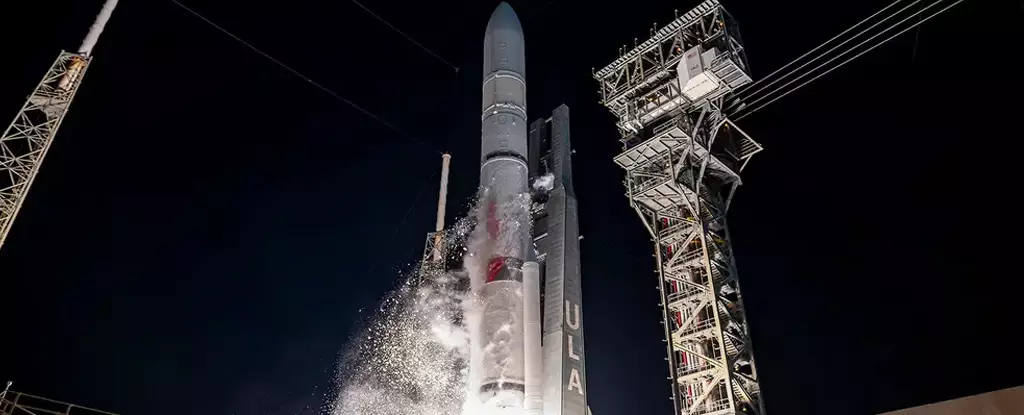In a significant blow to American space exploration, organizers of an ambitious commercial mission to the Moon acknowledged on Tuesday that the endeavor will ultimately result in failure. The mission, which aimed to be the first US spacecraft to land on the lunar surface since the Apollo era, experienced a crucial loss of fuel. Astrobotic’s Peregrine Lunar Lander, fastened atop United Launch Alliance’s new Vulcan rocket, successfully launched from Florida’s Cape Canaveral Space Force Station. However, a few hours after separation from the launch vehicle, Astrobotic encountered multiple malfunctions that rendered the spacecraft inoperable. Regrettably, the company admitted that there was now no possibility of a soft landing on the Moon.
The initial malfunction witnessed by Astrobotic was the inability to properly orient Peregrine’s solar panel towards the Sun, leading to a failure in charging its battery. This issue stemmed from a propulsion glitch that also caused external damage to the spacecraft. With approximately 40 hours of fuel remaining in Peregrine, Astrobotic decided to continue operating the craft until it fully depleted its propellant. NASA had invested over $100 million in this mission, entrusting Astrobotic with the responsibility of transporting crucial scientific hardware to the Moon’s mid-latitude region. The objective was to gather data on surface composition and radiation, aiding in the preparation for future manned missions to our celestial neighbor.
The Commercial Sector Under Scrutiny
With the United States increasingly relying on the commercial sector to facilitate lunar exploration and reduce costs, Astrobotic’s failure raises questions about the viability of this strategy. The unsuccessful landing attempt follows in the footsteps of other private companies that have faced similar setbacks. Israel’s Beresheet lander, a pioneering endeavor by a non-government entity, met its demise upon impact with the lunar surface in April 2019. Japan’s private Hakuto mission, operated by iSpace, also ended in a crash in April 2023. Thus far, achieving a successful soft landing has remained the domain of a select few national space agencies. The Soviet Union achieved this milestone in 1966, followed by the United States, which remains the sole country to have transported humans to the Moon. China has accomplished three successful landings since 2013, while India achieved this feat on its second attempt just last year.
Future Prospects
Despite the setback faced by Astrobotic, the commercial sector’s lunar ambitions show no signs of abating. The next company in line to attempt a lunar landing is Houston-based Intuitive Machines, which is scheduled to launch in February. Its destination is the Moon’s south pole, a region of great scientific interest. It is imperative to note that Astrobotic’s mission encompassed more than just scientific instruments. Peregrine carried additional cargo on behalf of private clients, including a physical Bitcoin, cremated remains, and DNA samples. Among the notable individuals whose DNA was included are Star Trek creator Gene Roddenberry and renowned sci-fi author and scientist Arthur C. Clarke. However, the inclusion of human remains caused controversy, with the Navajo Nation, America’s largest Indigenous tribe, denouncing it as a desecration of sacred space. Despite their objections and a meeting with White House and NASA officials, their concerns did not lead to a change in the mission’s trajectory.
Astrobotic’s failure serves as a reminder of the immense challenges involved in lunar exploration. The harsh environment and complex logistics carry inherent risks that even the most capable organizations cannot always overcome. Nevertheless, setbacks should not deter future endeavors, as they present opportunities for growth and valuable lessons. As the commercial sector continues to forge its path towards the Moon, the pursuit of scientific knowledge and space exploration must always be tempered by a respect for cultural sensitivities and the preservation of sacred spaces. Only by approaching these endeavors with caution and open dialogue can we hope to achieve the shared goal of unraveling the mysteries of our cosmic neighbor.


Leave a Reply